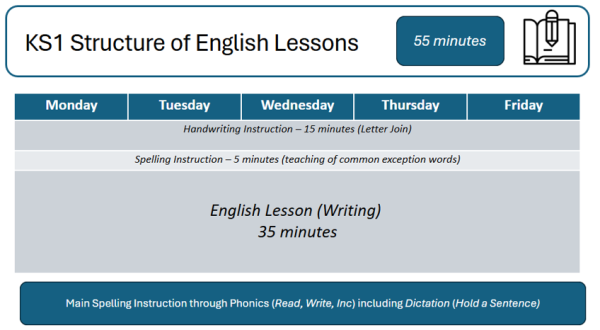Writing
Principles Behind our Approach to Writing
English Leads across our schools at Excelsior Academy Trust have developed a clear approach to the teaching of writing that is based on the following educational theory and research:
- Cognitive Load Theory – Sweller
- Schema Learning Theory – Piaget
- Principles of Instruction - Rosenshine
These insights have informed both the design of the writing curriculum as well as the preferred pedagogies to teach our children to write with accuracy, craft and an authentic authorial voice.
Additionally, our writing curriculum includes;
- a text-centric approach, using high quality texts and children’s enjoyment and appreciation of stories and other literature at its heart.
- a focus on the development of spoken language as the bedrock of literacy development and in particular the development of vocabulary.
- a progressive sequence of knowledge taught at each stage of learning in order to put that knowledge into action.
- a focus on developing confident writers who write in authentic ways, without using artificially constructed rules, paying attention to the purpose, audience and form of the texts they read and write, and the impact language has on them and others.
Writing:
Our writing units are built around carefully selected engaging and high quality texts which have been mapped to ensure progression from EYFS to Year 6. The teaching of writing is taught through a clearly sequenced approach to ensure children read like writers and write like readers. This includes three related stages; Immerse (building required schemes relating to the themes, concepts and context of the core text), Explore (where children analyse the authors craft, are taught the key grammatical concepts in context, and rehearse this in their own writing), and Write (for a specific purpose, audience and impact in a chosen form, through the process of pre-writing, planning, drafting, editing and publishing their work).
The approach to the teaching of grammar and punctuation is through the lens of a contextualised approach, with a focus on sentence level instruction, allowing for explicit teaching of grammatical knowledge within the understanding of both the model text and the intended purpose, audience, form and impact of the writing outcome.
Explicit handwriting and spelling instruction is embedded and rehearsed through the approach of daily dictation across all key stages. This approach also provides opportunities for regular rehearsal of syntactical patterns and grammatical structures that have been previously explored and learned.
Opportunities for both incidental and formal writing throughout the writing units of work are planned to rehearse and demonstrate the craft of writing, alongside opportunities for writing across the foundation subjects.
- All children are expected to produce 9 pieces of writing (assessed) across a year. This is the broad equivalent to 3 pieces of writing produced each long term.
- The purpose coverage for these 9 pieces is outlined below. Note: the purpose, audience, form and impact are not the primary drivers for instruction in KS1. Children are taught to achieve ‘sentence mastery’ as the primary objective, with the purpose of writing forming the guide for content; therefore, their writing will broadly be pieces to narrate or inform.




